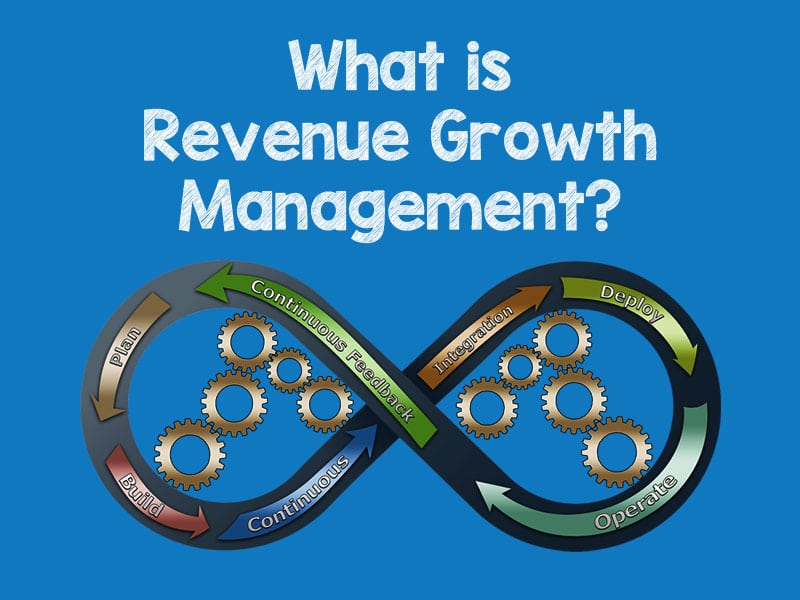Here Is All You Need to Know about the Revenue Growth of Your Company

Market volatility and network disruptions, particularly transitions to e-commerce or direct marketing, are eroding the profitability of consumer-packaged goods (CPG) manufacturers. GrowthJockey assists CPG firms in retaliating against these changes by revamping their Revenue Growth management strategies.
Organisations specializing in consumer products have figured out how to get substantial benefits from controlling their revenue growth. However, the market now demands that they raise their standards again.
Growth in sales may be estimated using a straightforward formula, but it is far from the whole story. The key is to figure out how the statistic relates to the rest of your company's operational records and what role the internal systems and procedures play in producing that result.
Here is a guide to achieving success in the same.
What is Revenue Growth?

Simply put, Revenue Growth is an increase in revenue earned by a company during a specific time period compared to the same time period the year before. That is, it represents the difference between your earnings this year and those of the previous year.
Revenue is often misunderstood to mean sales or profits. Let us quickly compare and contrast the three:
1. Revenue
Revenue is the total amount of money earned from all sources, such as sales, acquisitions, royalties, commissions, and other types of income. Expenses are not taken into consideration.
2. Sales
In business, sales are the sum of money gained via the sale of goods and services.
3. Profit
Profit is calculated by slicing income by spending.
Another critical distinction between sales, profits, and revenue is that the former are often outcome-focused, while revenue growth is closer to a tactic than an objective.
PwC's Global Risk Survey for 2022 found that 23% of consumer goods businesses anticipate a 6% to 10% increase in revenue. Several Consumer Packaged Goods (CPG) companies are resorting to revenue growth management to increase their upper and lower lines. They are also working to develop the competencies necessary to grow their own net revenue.
Why Is Understanding Revenue Growth Crucial for Your Company?
Understanding revenue growth is crucial because it provides a comprehensive overview of your company's overall health. Unlike sales or profits, revenue growth takes a broader perspective, considering all income sources. It helps in identifying what's working, what's not, and where improvements can be made. This holistic view enables better strategic decisions and long-term planning.
Revenue growth also impacts several areas of your business:
-
Acquisition, Commitment, and Performance with Customers: By analyzing revenue growth, you can identify the effectiveness of your customer acquisition strategies and their impact on overall business performance. This helps in refining marketing and sales approaches to improve customer retention and satisfaction.
-
Valuations: For startups and growing companies, demonstrating consistent revenue growth can significantly enhance company valuations, attracting investors and facilitating better financing options.
-
Human Resources: Understanding revenue growth allows you to align your HR strategies with business goals, ensuring you have the right talent to support growth initiatives.
-
Professional Development: Revenue growth insights can guide employee training and development programs, helping your team acquire the skills needed to drive further growth.
-
Marketing and Sales: Revenue growth analysis helps in optimizing marketing and sales strategies, ensuring resources are allocated to the most effective channels and campaigns.
While focusing on profitability is important, prioritizing revenue growth is crucial for long-term sustainability. Reducing costs can only go so far; without increasing revenue, your business may struggle to sustain growth.
Key Metrics to Track Revenue Growth Effectively
To effectively track revenue growth, focus on key metrics that provide deeper insights into your revenue generation processes. Here are some critical metrics to monitor:
-
Customer Acquisition Cost (CAC): This metric measures the cost of acquiring a new customer. By understanding CAC, you can assess the efficiency of your marketing and sales strategies and find ways to reduce acquisition costs.
-
Customer Lifetime Value (CLV): CLV indicates the total revenue you can expect from a customer over their lifetime. Tracking CLV helps you understand the long-term value of your customers and informs strategies for improving customer retention and loyalty.
-
Monthly Recurring Revenue (MRR): For subscription-based businesses, MRR is a crucial metric that shows the predictable revenue generated every month. It helps in forecasting future revenue and planning growth strategies.
-
Churn Rate: Churn rate measures the percentage of customers who stop doing business with you over a specific period. By reducing churn, you can improve revenue stability and growth.
-
Average Revenue Per User (ARPU): ARPU provides insights into the revenue generated per user, helping you identify opportunities to increase revenue through upselling or cross-selling.
Regularly monitoring these metrics allows you to make informed decisions to enhance your revenue growth strategy. It helps in identifying areas of improvement and implementing effective measures to boost overall revenue.
Related Article: What Are Unit Economics and How Are They Calculated?
Strategies to Boost Revenue Growth in Your Company

Implementing effective strategies is vital for boosting revenue growth. Here are some key strategies to consider:
1. Enhancing Customer Experience
Improving the customer journey can significantly impact satisfaction and loyalty. Invest in customer service training, streamline support processes, and use feedback to make continuous improvements.
2. Diversifying Income Streams
Explore new revenue channels such as subscriptions, premium services, or partnerships. Diversifying income streams reduces dependence on a single revenue source and increases overall stability.
3. Optimizing Pricing Models:
Regularly review and adjust pricing strategies to reflect market demand and value perception. Conduct market research to understand competitor pricing and customer willingness to pay.
4. Leveraging Data Analytics
Use data insights to make informed decisions and predict future trends. Implement analytics tools to track performance metrics, customer behavior, and market trends.
5. Investing in Marketing
Allocate resources to targeted marketing campaigns that attract and retain customers. Use digital marketing techniques, such as SEO, PPC, and social media marketing, to reach a broader audience.
6. Expanding Product Offerings
Regularly update and expand your product or service offerings based on customer needs and market demand. This helps in attracting new customers and retaining existing ones.
7. Strengthening Sales Efforts
Train your sales team on the latest techniques and tools to improve their effectiveness. Implement CRM systems to manage customer relationships and track sales performance.
By implementing these strategies, you can create a robust plan to boost revenue growth and ensure long-term business success.
How We at GrowthJockey Do It ?
We begin by assisting you in developing the optimal approach for net revenue management, one that recognises the requirement to create and implement revenue growth management measures per market. Our revenue management experts design market-specific plans for revenue growth in businesses using their regional experience.
Collectively, we use several mechanisms to transform our customers' net revenue management plans into actions that may rapidly enhance performance and create new value.
We strengthen our technique for net revenue monitoring in Consumer-Packaged Goods with several enablers to assist you in developing the essential revenue growth management skills to ensure long-term success.
Wrapping Up
As competition rises in the CPG market, you will need more sophisticated tools for pricing, promotions, selection, and trade investment. As CPG companies, you should ponder the percentage of Revenue Growth Management's potential you are tapping into. You should ask if the rate of your development is outpacing that of your rivals and retail partners.
At GrowthJockey, we help you formulate RGM strategies based on the answers to these questions so that you may put yourselves in the best possible position to emerge as commercial winners.
At GrowthJockey, our unwavering dedication lies in creating customised models that effectively tackle the crucial challenges confronted by our clients across diverse industries. Regardless of the size of your company, whether a small-scale enterprise or a large corporation, you can now leverage cutting-edge technology to drive revenue growth.
Take the decisive step towards unlocking the next level of growth for your brand by contacting us today!








